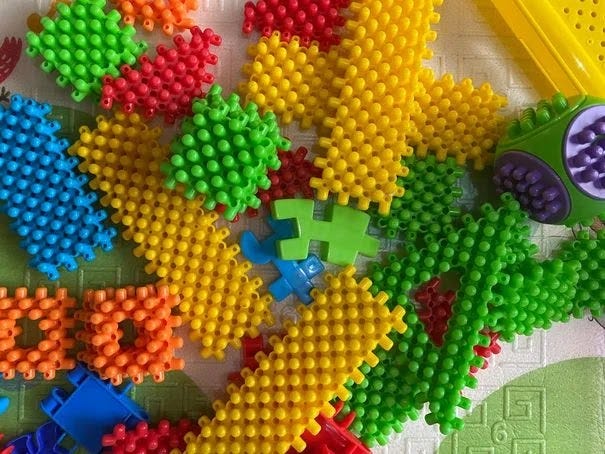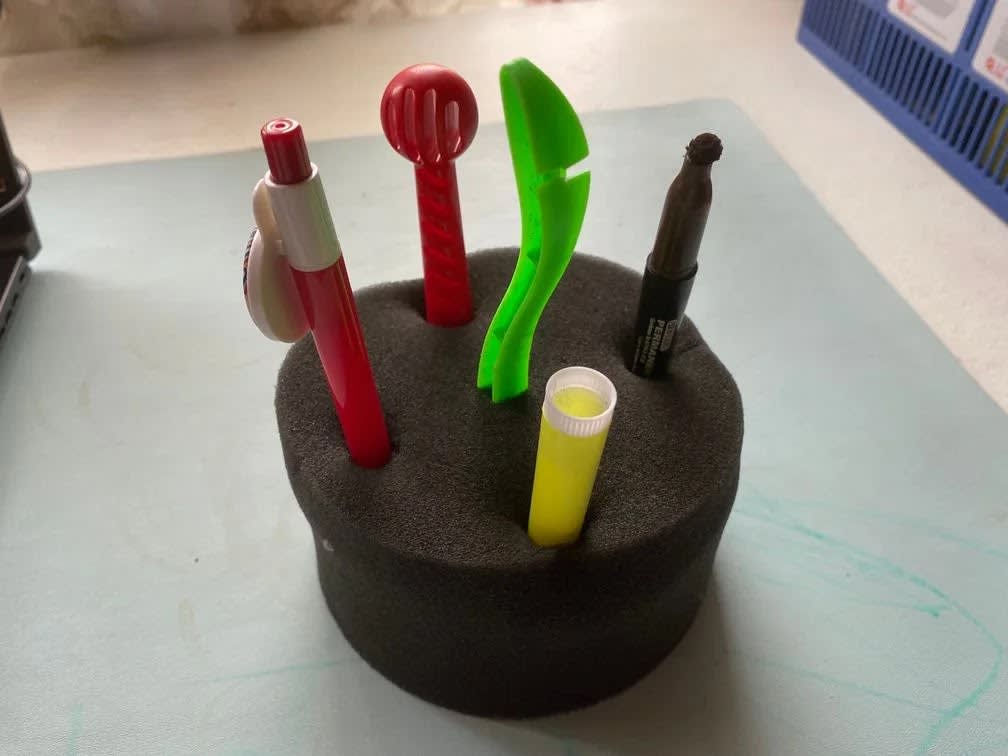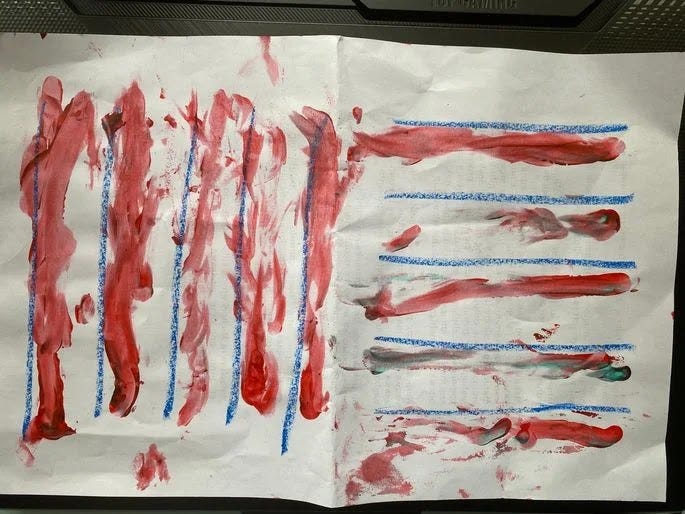Pre-Writing Exercises To Improve The Grip And Coordination Of Children With GDD
During Miguel’s last session at school, his teacher told me that they have begun to include pre-writing exercises in their routine with the aim of improving his grip and hand coordination. I’m really loving the new things that I’m also learning from his school. While previously I thought that to teach a child how to write, it’s just about training them how to hold a pen properly then practicing with them the strokes for each letter. I didn’t realize that improving grip and coordination are the most logical way to begin because that will allow children to hold the pen or pencil correctly.
Pre-Writing Exercises To Improve The Grip And Coordination Of Children With GDD
Having said that, here are some of the pre-writing activities that I learned from Miguel’s teacher:
Pulling popsicle sticks from a Theraputty base
It’s a simple activity in which Miguel’s teacher inserted about five popsicle sticks into a Theraputty. A Theraputty is somehow similar to clay; it’s malleable, comes in different colors, and made of non-toxic components. It’s often used in physical and occupational therapy for improving grip strength, strengthening the hand muscles, and refining motor skills.
With the popsicle sticks wedged in a Theraputty, his teacher would ask Miguel to use his fingers to pull out the popsicle sticks and then shoot them in a bottle. The whole idea here is that the act of grasping the sticks and the gentle resistance provided by the Theraputty when the sticks are pulled out would strengthen the muscles in Miguel’s dominant hand.
Our improvised tool to help strengthen Miguel's grip
We didn’t have Theraputty at home so I improvised by using a regular foam base (yes, the one used in cushions, pillows, and beds), puncturing holes into it, and then inserting regular objects (three coloring pens, a toy xylophone beater, and another elongated object from a toy). I like that the foam provided good resistance as I can see Miguel exerting some effort to pull out the objects.
I jokingly asked the teacher if I could just instruct Miguel to pull out weeds from the garden and she said yes, it was also a good activity to improve his grip.
Letter matching activity
Also, during Miguel’s last session, his teacher introduced him to a letter matching activity. His teacher wrote his complete name on a white board and asked him to match the letters. It was an exercise to start familiarizing him to the letters that make up his name.
However, when we were trying to duplicate this activity at home, I could only find letters to complete his second name “Miguel.” Anyway, I’ll just have to improvise materials for his first name “Kahlil.”
Erasing lines in a white board using fingers
This is a simple yet great activity to improve hand coordination. Miguel’s teacher would draw straight lines as well as shapes in a white board. Then, using his index finger, Miguel’s would erase these lines and drawings following their outlines.
Tracing lines with finger paint
We didn’t have white board at home so what we did was do a finger-painting activity in which Miguel would trace the lines that I did using the paint on his index finger. He seemed to be enjoying this because Miguel loves to finger-paint.
Reinforcing Miguel’s other activities at home
We also continue to reinforce Miguel’s other activities such as color-matching as well as the toy blocks that he would have to stack. We also do the formboard and the jumping exercises every other day so that Miguel wouldn’t forget these.
Color-matching activity
I just noticed lately that Miguel has been a little out of focus. He was finding it hard to do the color-matching and the toy block exercises.
I lost my patience one time and hit his hand lightly to get him to concentrate and to let go of the blocks that he was holding. He almost cried so I just gave him a short break, carried him, and told him that I wasn’t angry anymore. Miguel was a little more cooperative after that and we were able to finish the activities although it took us longer than usual.
I know a lot of special needs parents also lose their patience and temper. Don’t be too hard on yourselves, we all commit mistakes. Forgive yourself for your lapses but also do your best to make it up to your child. If you can, explain to your child why you lost your patience and what you can possibly do to improve it the next time.
If you have suggestions or similar stories to tell, feel free to share them in the comment section below.








